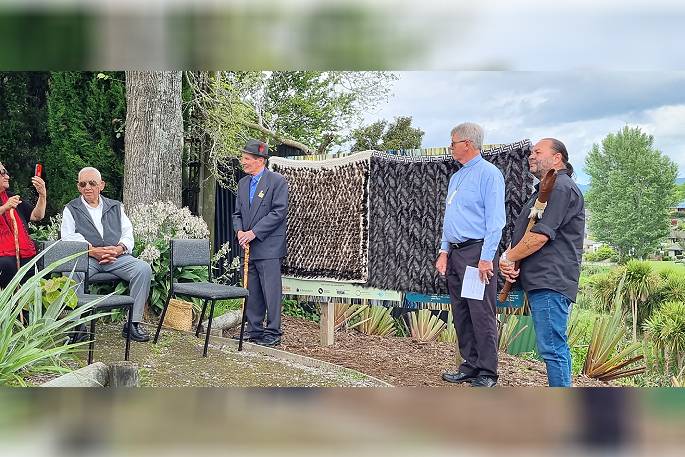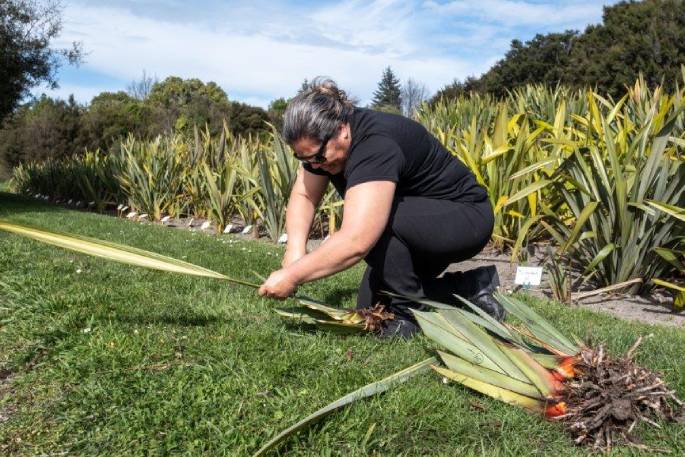A project to cultivate a flax-growing site in Katikati – which will eventually flourish to be a site of workshops, educational programmes and exhibitions – has put down its roots.
Located next to the Western Bay Museum on Main St, Te Rereatukahia Marae Kaumatua and Kuia, Northern Tauranga Moana hapu representatives, and delegates from the museum, Creative Bay of Plenty, sponsors and supporters gathered last month to bless and unveil the project, which has been 18 months in the making.
'Our Pa Harakeke was created by Kairaranga (weaver) Kuia Kerewai Murray Wanakore, Te Rereatukahia Kaumatua, alongside Manaaki Whenua-Landcare Research, Canterbury and Western Bay Museum,” says Western Bay Museum manager Paula Gaelic.
A pā harakeke is a planting of selected varieties of harakeke (Phormium spp., New Zealand flax), chosen for their muka (fibre) or raranga (weaving/plaiting) qualities. Cultivating harakeke is a way to ensure vigorous, healthy bushes that will provide high quality leaf material for weaving.
Paula says funding from Creative NZ's Creative Communities Scheme has enabled the project to come to fruition. 'We feel privileged and honoured to have spent this past year working closely with Kuia Kerewai. Thank you as well to kairaranga Sarah Tangitu, who along with Kerewai flew to Lincoln to bring the cultivars home.”
Paula says seven species were selected, each serving a different purpose. 'Over time it is intended that our Pa Harakeke will be a site of workshops, educational programmes and exhibitions.”
To Māori, there was no plant more important than harakeke in the early days. 'As Pākehā culture and clothing displaced time-honoured Māori ways in the latter part of the last century, traditional harakeke cultivars fell into neglect.
'In the early-1960s, a kairaranga (weaver) of Gisborne began noticing that weavers were reduced to using inferior harakeke and started to seek out and collect good traditional varieties. Over succeeding decades, she assembled a collection of some 60 Māori cultivars.”
The collection was given to the former Department of Scientific and Industrial Research and has since formed the basis for numerous plantings around Aotearoa by Manaaki Whenua -Landcare Research, which has saved these traditional harakeke cultivars.

The Pa Harakeke information board – covered with korowai until unveiling by kaumatua George Burt and Reverend Brendan Gibbs. Photo: supplied.
'A solid partnership has been established with Manaaki Whenua, the kairaranga (weavers) of our district, Northern Tauranga Moana and Western Bay Museum,” says Paula.
'We'll continue to have this cultural engagement under the governance of Kuia Kerewai and Kaumata of Te Rereatukahia. It is their taonga and all initiatives going forward will be at their approval.
'We'd also like to acknowledge and thank the support and hard work of Project Parore, for taking such care in preparing this space [near the museum]...and to Taylor Brothers Transport Ltd for supplying mulch.
'We've taken our first steps, and we look forward to moving forward collectively with this project.”



0 comments
Leave a Comment
You must be logged in to make a comment.